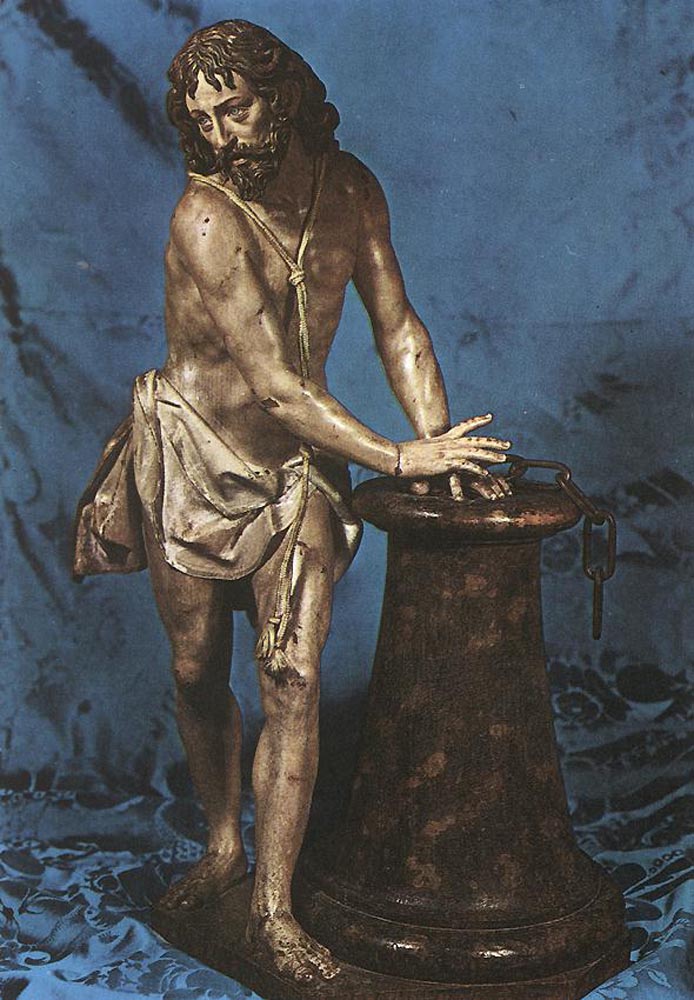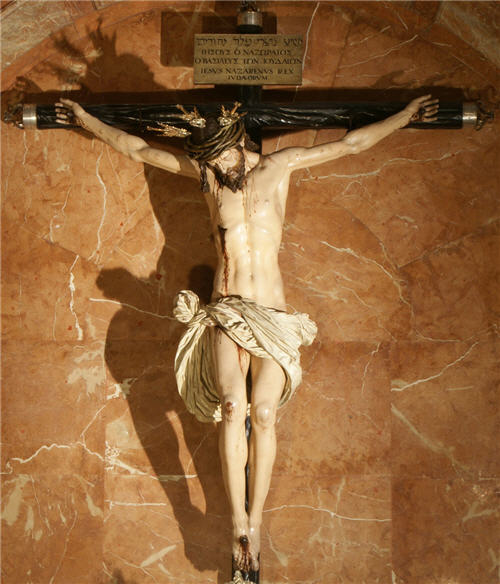 When I think of sculpture, I usually think first of something that is monochrome - in one colour, that of the material that it is made from. Perhaps stone or cast in bronze. If I think of coloured sculpture, what probably comes to mind is the kitsch stuff of gift shops. There is however, a wonderful tradition of ‘polychrome’ meaning many colours sculpture.
First, many of the statues that we now see in just stone would have originally been painted (for example the pre Renaissance sculpture of the Middle Ages. There is also a great baroque tradition of polychrome carving and some of the greatest examples are from the Spain in the 17th century.
When I think of sculpture, I usually think first of something that is monochrome - in one colour, that of the material that it is made from. Perhaps stone or cast in bronze. If I think of coloured sculpture, what probably comes to mind is the kitsch stuff of gift shops. There is however, a wonderful tradition of ‘polychrome’ meaning many colours sculpture.
First, many of the statues that we now see in just stone would have originally been painted (for example the pre Renaissance sculpture of the Middle Ages. There is also a great baroque tradition of polychrome carving and some of the greatest examples are from the Spain in the 17th century.
In the examples show, which are from this period, you can see the same stylistic features used by the stone sculptors of the time, even though these artists are not ‘painting in shadow’, as stone sculptors such as Bernini did (as I wrote about last week, here). For example, they display the same exaggerated angular folds in the cloth to give the form vigour. One of the greatest of these Spanish artists is a man called Alonso Cano.
There is an artist in Spain today who is producing work in a similar vein called Dario Fernandez. Unfortunately, I couldn’t find any images that I am able to reproduce here, but there are plenty on his website www.dariofernandez.com and he is well worth looking up.
Works shown (all from the 17th century), from top: Scourging at the Pillar, Gregorio Fernandez; John of God, Alonso Cano; The Scourging at the Pillar, Alonso Cano; Suffering Christ, Gregorio Fernandez; St Teresa of Avila, Gregorio Fernandez; Christ of Sorrows, Pedro de Mena; Crucifixion, Juan Martinez-Montanez








